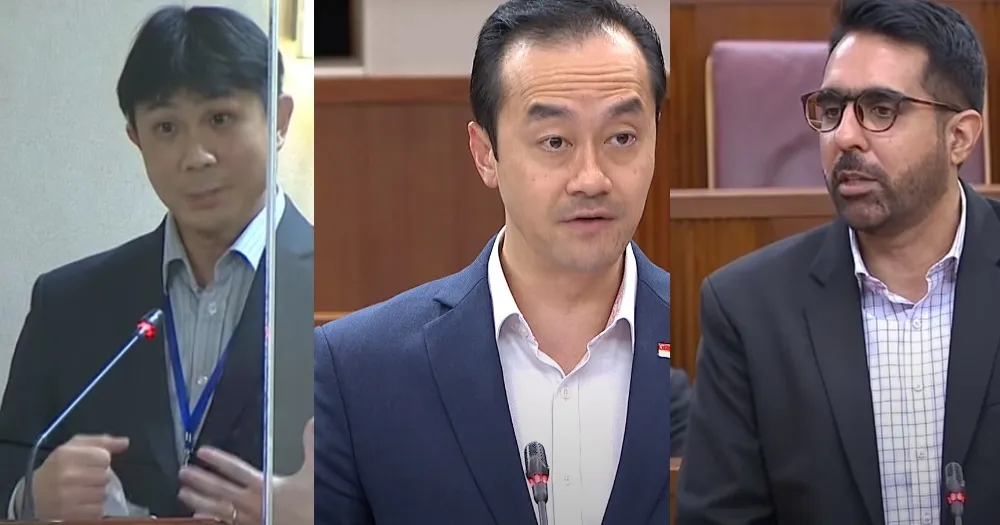毕丹星:月薪低于1300 新元对于任何一个新加坡人来说都是不能接受的
毕丹星力劝政府加快行动帮助新加坡的低收入工人。
|1 min read

<p>新加坡反对党领袖毕丹星周四(10月15日)在议会上表示,任何新加坡人的月收入低于1300 新元都是“不能接受的”。</p> <p>这是他对卫生部高级部长许宝琨的回应。许宝琨说,即便享有就业入息补助,仍有3.2万名工人的月收入低于1300 新元。</p> <h2>帮助中小企业的“道德要求”,</h2> <p>最近,包括毕丹星在内的工人党成员呼吁政府考虑在新加坡实施1300 新元的总体最低工资制。</p> <p>毕丹星特别指出,这是一种“道德要求”,并表示渐进式薪金模式花费的时间太长,无法帮助低薪的新加坡人,因为它仅针对三个特定行业制定了最低工资制,并没有帮助这些行业以外有需要的工人。</p> <p><img src="https://imgur.com/JjAuT00.jpg"></p> <p>“最低工资制+”专责小组</p> <p>为新加坡工人制定普遍最低工资制不仅是一种道德要求,也是一种体现国家团结的行为,在当今的经济环境中尤为重要。</p> <p>政府的“最低工资制+”行业性办法包括行业生产力和职业发展等其他方面,所有办法都不得有异议。对最低工资制采取这种行业性办法的问题在于实施时间过长。它已经持续了8年,涵盖了三个行业。对于在这些行业以外工作的新加坡人来说,时间太长了。他们要等多久,这是我的同事贝里安在议会中提出的问题,但没有得到任何答复。</p> <p>从昨天国家职工总会秘书长和人力部部长的帖子来看,低薪工人问题三方工作组似乎坚持“最低工资制+”行业性办法来帮助工人。他们能做的是考虑并行努力即立即实行以1300 美元为基础的普遍最低工资制并定期审查,同时探索行业改进或者“最低工资制+”的有效好处。</p> <p>为新加坡工人制定普遍最低工资制不仅仅是一种道德要求。它说明了作为新加坡人意味着什么。因为真正衡量我们社会的标准在于我们如何对待我们最脆弱的群体。在我最近分享的一篇BT文章中,许多商业领袖已经表示,他们将支持一个经过合理考虑的国家最低工资标准。我希望雇主、企业、工会和政府考虑到这个问题不仅仅是金钱的问题,而是我们国家团结的根本基础。</p> <p>对此,许宝琨解释了最低工资制的潜在弊端,并辩称渐进式薪金模式取得了优异的成绩。</p> <p>他还要求毕丹星在议会中阐明工人党关于最低工资制对中小企业影响的立场,因为在大多数发达国家,法定最低工资制适用于所有工人,包括移民工人。</p> <p>他提出,如果外籍工人必须得到同样的最低工资1300 新元,中小企业可能面临雇不起员工的危险。</p> <p>许宝琨表示,许多公司,特别是建筑行业公司,它们正处于困境且尚未脱离困境。</p> <p>许宝琨说,“如果我们的中小企业无法承担由此产生的成本,那么在道德上是否有必要帮助它们,我们正处于新冠疫情的严重危机当中,这是当前特别值得思考的问题。”</p> <h2>毕丹星:最低工资制不会显著影响中小企业</h2> <p>毕丹星回应说,他不认为实行最低工资制会显著影响中小企业。</p> <p>他还指出,鉴于目前有多种外籍工人配额和征税,工人党的最低薪资建议目前不包含外籍家政工人或者外籍劳动力。</p> <p>毕丹星说,他理解这些措施是为达到特定目的而实施的,但他认为政府仍应该迅速实施最低工资制。</p> <p>毕丹星说:“我认为必须实施这一计划并了解如何最有效地解决中小企业的整体人力资源需求以及经济需求。”</p> <h2 id="32">3.2万名工人“不是个小数目”</h2> <p>毕丹星认为,这种紧迫性是由于许宝琨在讲话中透露的一个关键数字,即3.2万名工人月薪低于1300 新元。</p> <p>毕丹星指出,收入低于工人党提议的最低工资制的工人“不占少数”,这反映出有特别多的新加坡人需要帮助。</p> <p>他强调,他在Facebook上的帖子并不是要摒弃渐进式薪金模式,而是要敦促政府加快行动帮助这些占当地1.7 %劳动力的3.2万名低薪工人。</p> <p>毕丹星说,鉴于这些新加坡人的处境,他准备与许宝琨合作以确保政府能够尽快帮助这些人。</p> <p>毕丹星说,“我不认为任何新加坡人的收入低于这个数字是可以接受的。这简直就是不能接受的。如果我们能双倍加速采取行动,那就让我们行动起来吧。”</p> <h2>实施最低工资制的许多实际考虑</h2> <p>随后,许宝琨说,3.2万这个数字“不是很清楚的数据”,因为它包括了不同职业的人。</p> <p>这些人里有可能从事技术工作的人,例如协助父母打理摊位的小贩,他们可能“很高兴”只拿到700 新元的工资。</p> <p>许宝琨认为,因为有许多这样的实际考虑,使实施最低工资制变得困难。</p> <p>许宝琨说:“研究和大量的研究数据是好的,但在实践当中却总是很难实现。”</p> <p>他还表示,考虑到可以在工人和企业之间取得平衡,与利益相关者协商的方式仍然是最佳方式。</p> <p>许宝琨还说,渐进式薪金模式仅适用于新加坡人,这意味着任何渐进式薪金模式的扩大只会让新加坡人受益,这是个“好消息”。</p> <p>然而鉴于在许多发达国家,所有行业的总体最低薪资将包括外国工人,许宝琨警告说,政府在考虑这一计划时必须谨慎,因为提高最低工资制将比扩大渐进式薪金模式影响更大。</p> <h2>支持最低工资制与帮助中小企业并不矛盾</h2> <p>盛港的工人党议员林志蔚也参加了会议并感谢许宝琨对渐进式薪金模式“慷慨激昂的辩护”。</p> <p>不过他警告许宝琨,不依赖“民间智慧”和“工会领袖的信念”是很重要的,因为有许多研究都在称赞最低工资制的优点。</p> <p>他说,研究表明最低工资制不会导致失业率明显上升,并表示这是基于证据而不仅仅靠信念。他补充说,来自“世界各国”的证据表明,只要最低工资制不设定得太高,它对失业率就会产生“最小的影响”。</p> <p>林志蔚建议成立一个独立的薪资委员会,由学者、劳工运动代表和雇主组成,提出最低薪资金额,以防将问题政治化。</p> <p>他还表示,他不认为支持最低工资制是中小企业“独有”,并回应了许宝琨先前关于最低工资制对中小企业影响的观点。他说:</p> <p>“事实上我只想提醒大家,发明汽车的亨利·福特明白这个道理。他说他必须付给工人足够的薪水,这样他们才能买他的车。因此,当我们付给工人足够的薪水时,最终遭殃的不会是我们的小型企业。”</p> <p>顶部图片来自Gov.sg的YouTube。</p>

